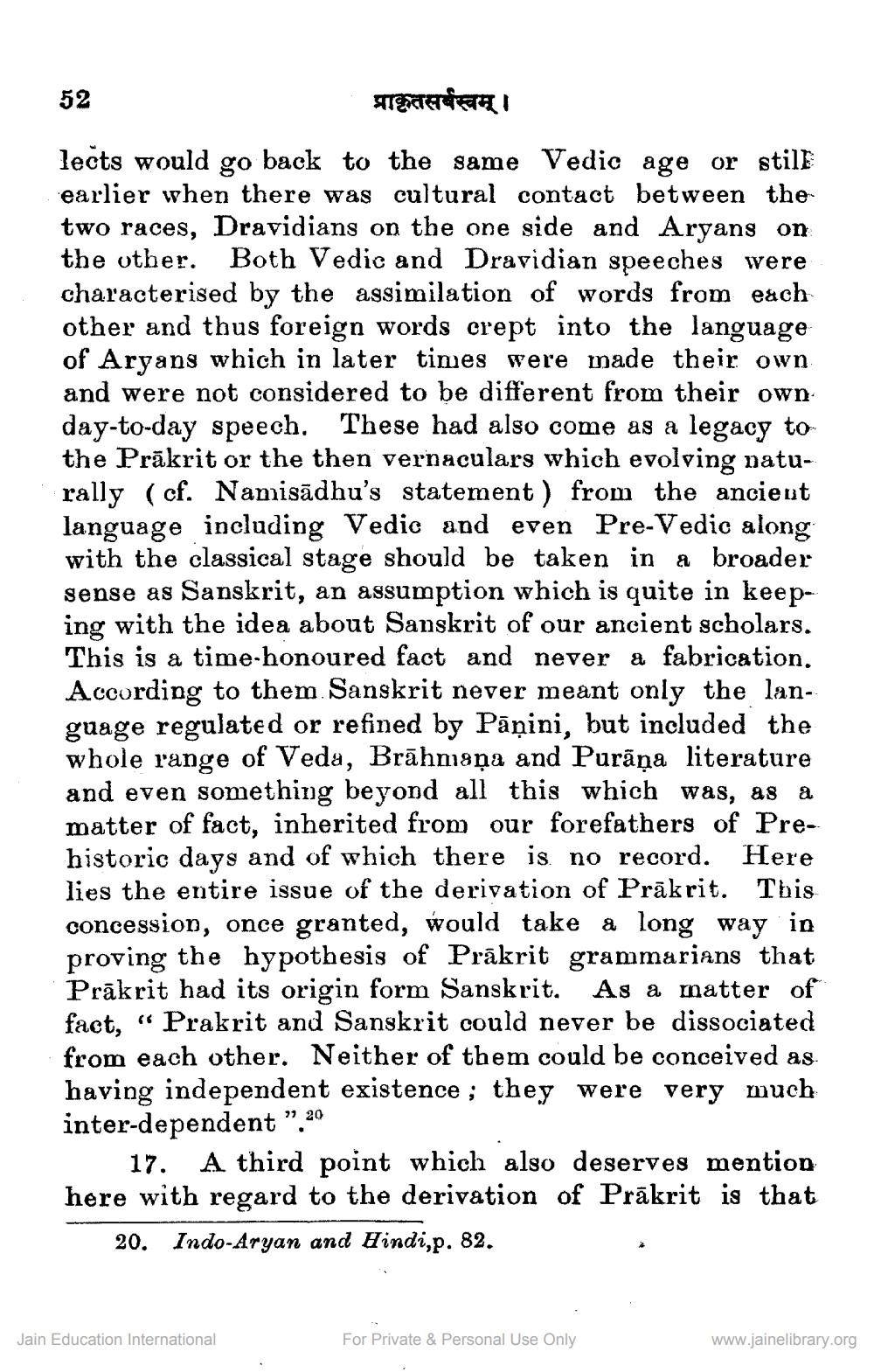________________
52
प्राकृतसर्वस्वम्। lects would go back to the same Vedic age or still earlier when there was cultural contact between the two races, Dravidians on the one side and Aryans on the other. Both Vedic and Dravidian speeches were characterised by the assimilation of words from each other and thus foreign words crept into the language of Aryans which in later times were made their own and were not considered to be different from their own day-to-day speech. These had also come as a legacy to the Prākrit or the then vernaculars which evolving naturally (cf. Namisādhu's statement) from the ancieut language including Vedic and even Pre-Vedic along with the classical stage should be taken in a broader sense as Sanskrit, an assumption which is quite in keeping with the idea about Sanskrit of our ancient scholars. This is a time-honoured fact and never a fabrication. According to them. Sanskrit never meant only the language regulated or refined by Pāṇini, but included the whole range of Veda, Brāhmaṇa and Purāņa literature and even something beyond all this which was, as a matter of fact, inherited from our forefathers of Prehistoric days and of which there is no record. Here lies the entire issue of the derivation of Prākrit. Tbis concession, once granted, would take a long way in proving the hypothesis of Prakrit grammarians that Prākrit had its origin form Sanskrit. As a matter of fact, « Prakrit and Sanskrit could never be dissociated from each other. Neither of them could be conceived as. having independent existence ; they were very much inter-dependent ".20
17. A third point which also deserves mention here with regard to the derivation of Prākrit is that
20. Indo-Aryan and Hindi,p. 82.
Jain Education International
For Private & Personal Use Only
www.jainelibrary.org




